People and Culture
“Rajasthan at its BEST “
CULTURE IS THE ART OF LIVING
‘Raja’ means ‘King’ and ‘Sthan’ means place. Put together, Rajasthan is the ‘Land of The Kings’. It was previously called Rajputana. Over the years it has been ruled by various kings including the Rajput, Marathas and even Muslim rulers, which have resulted in Rajasthan, bearing numerous beautiful forts with a wide variety in its architecture and diverse language and culture of its people. Rajasthan, in spite of being a desert, has been endowed with such beautiful sites that include various palaces, forts and pilgrim centres that define what Rajasthan really is.
Rajasthan is famous for its prestigious past and its various customs and traditions. It truly gives an insight into historic India and its phenomenal diversity.
Following are some points which make Rajasthan one of the most tourist-oriented states in India.
Attithi Devo Bhavo
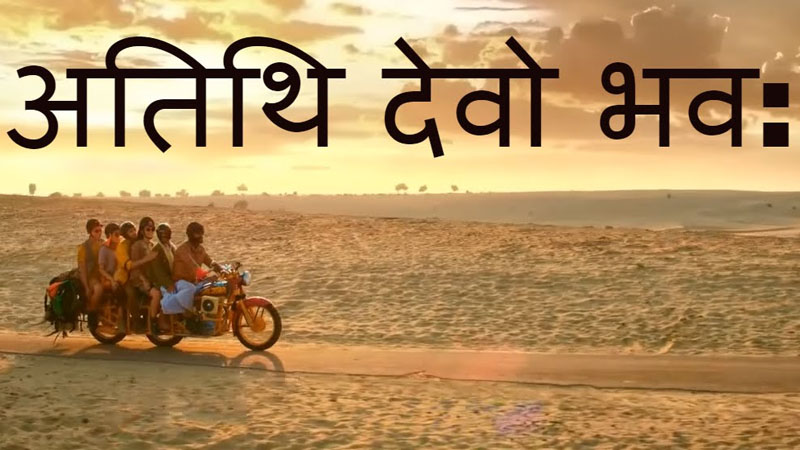
‘Attithi Devo bhavo’ means to treat your guests like as you would treat God. This principle is a part of the Rajasthani people. They treat their guests well and make them want to visit again. In fact, most of the people in Rajasthan are involved in tourism-related jobs and hence take this principle very seriously as they earn their revenue due to the tourists and have pledged to serve them.
Folk Music And Dance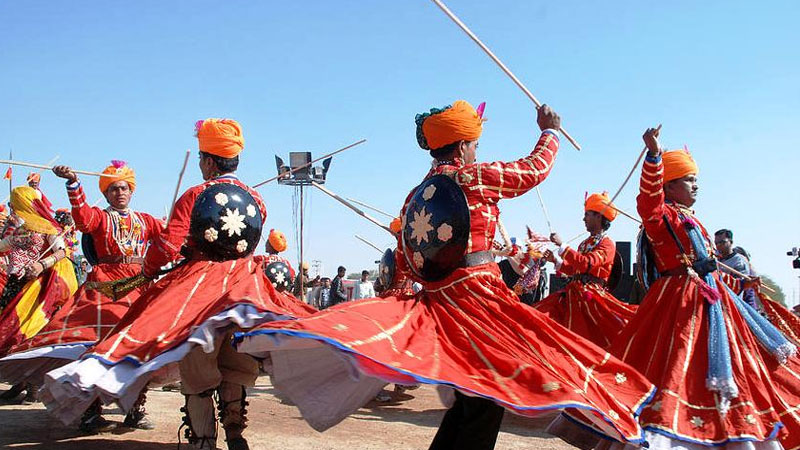
Since many rulers ruled Rajasthan, each region has its own folk culture. The folk music and dance of Rajasthan are similar due to their geographical confinement, but each differs in their unique style. Manganiyars and Langas are two prominent groups that contributed to the Rajasthan folk music. They perform ‘ragas’ (songs) for different purposes. Like during the pre-monsoon time, they would perform ragas to call forth the rains. Other famous groups are Banjaras, Mirasis, Jogis, and much more.
Many traditional instruments are used by them that include sarangi, kamayach, dhols, shenhai, and been. Folk songs were usually for certain purposes like weddings or birth or were passed to tell a story of bravery or a romantic tale. They were usually in the form of ballads.
The dance is varied as well. Dance differed among different tribes. It was mainly for the entertainment of the people and the king. Some of the dances include chang, ghoomer, bhopa, tejali, and kathipuli. Ghoomer dance, which originated in Udaipur, has gained international recognition and appreciation.
Food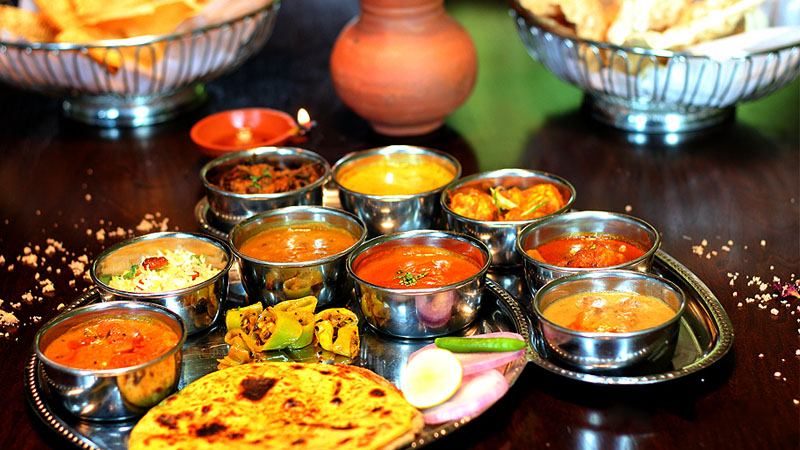
As a tourist, there are some foods that you absolutely need to try. Rajasthani food is known for its various spices and also its sweetness. Rajasthan is most famous for dalbati – A dish comprising of dal and wheat flour kneaded with yoghurt and dressed in ghee. It is also famous for kachori – the kachori in Rajasthan are of two types – sweet and spicy. The spicy kachori is called the pyaaz or onion kachori and the sweet kachori called the mawa kachori. Both these kachoris are easily available in any food stalls in Rajasthan. Ghewar and gheriya are some delectable sweet dishes originating from Mewar, available in most restaurants at Rajasthan. Most of the Rajasthani dishes are made in ghee. More than 70% of people in Rajasthan are Lacto vegetarian making it one of the most vegetarian states in India.
Architecture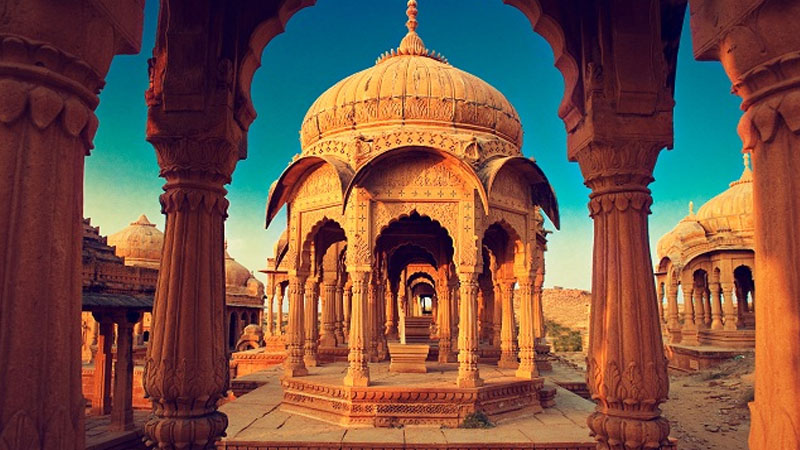
The architectural style in Rajasthan is as diverse as its people. You get to evidence some of the exemplary sites of Islamic, Hindu, colonial and even modern architecture. Rajasthan should be your next place to visit if you are a lover of architecture and appreciate monumental buildings, heritage sites and different styles of design. The Jain temple in Ranakpur was built in the 15th century.The style of architecture is M’ru-Gurjara Architecture (styles that include various structures and shapes). It is western Indian architecture style with various domes and carvings on the pillars and the ceilings.
The Umaid Bhavan Palace in Jodhpur is an architecture of Beaux Arts style along with a blend of eastern and western architectural styles in spite being built by Maharaja Jai sign II, a Hindu ruler. Jaisalmer Fort and Golden Fort was built in 1156 AD by the Rajput ruler Rawal Jaisal. The fort contains several gates, Jain temples and Havelis and is included as a world heritage site by UNESCO. There are only a few examples of architectural sites that Rajasthan holds. Other sites include memorials, forts, heritage hotels, etc.
Religions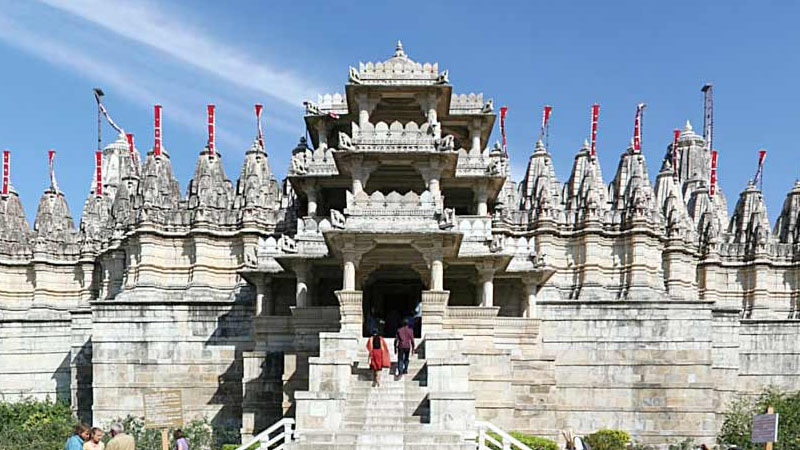
There has been a strong influence of religion on Rajasthan. Most residents of Rajasthan are Hindus (mainly Vaishnavas), Muslims, and Jains. There are various temples that are important pilgrim sites like the Lodrakar and Ranakpur Jain Temple, Jagdish temple, etc.
Handiworks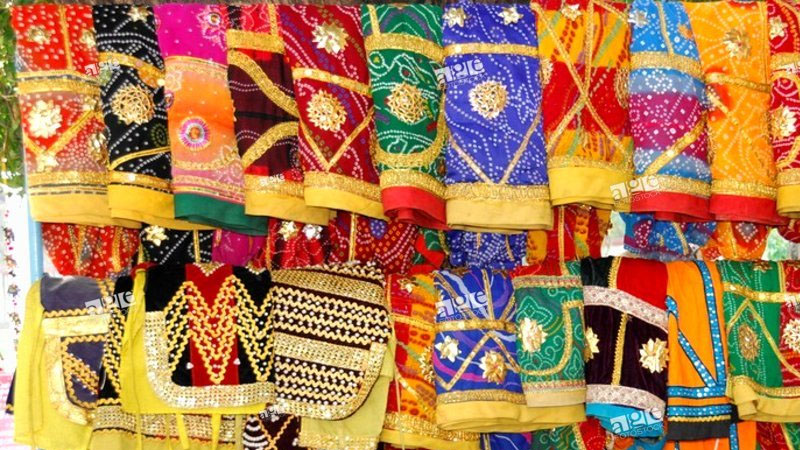
If you visit Rajasthan, be sure to reserve few hours or even a day for shopping. You will find beautiful carpets, garments, jewellery and more, that are all made by the local people. Any leather item is usually camel leather – they use it making journals, shoes and bags. The carpets are made from the hand-knitting techniques and much like Persian carpets; they have a geometric design and borders. There are also many miniature items made out of red sand or clay as toys for kids or decoration pieces with bells attached to it. You may also find safah or paggri (traditional headwear) in most of the shops that you may bring back as a memory from the place.
Shopping in Rajasthis in very reasonable and is an opportunity not to be missed. Antiques are a whole different thing. If you like to collect antiques, there are various sellers in Rajasthan. However, do some research on which sellers are authorised so that you are aware where you can purchase them. Most antiques are things that were the possessions of the kings.
Camels And Camel Festivities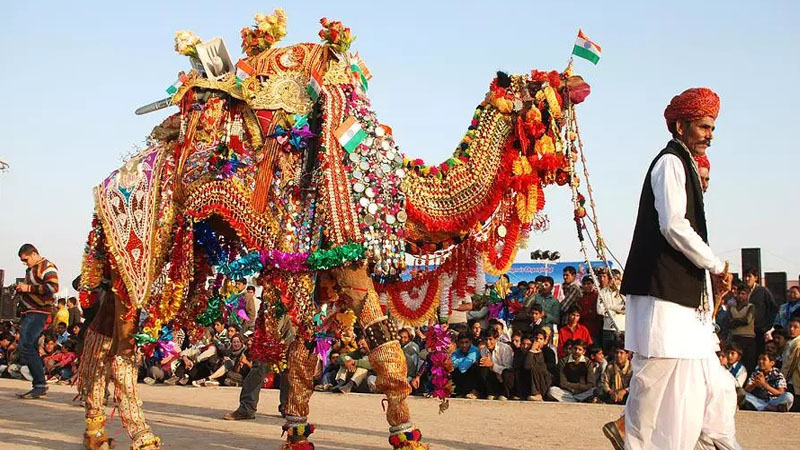
Camels are commonly found animals in Rajasthan. Camels are desert animals that are meant to survive conditions of scarcity of water, extreme winds, heat and cold due to their biology. Most camps in Rajasthan will include camel rides, and you will get to experience how well the camels can travel in deserts due to their long footed legs. Camel fairs take place every year in Bikaner, Pushkar and other regions. It is a festival or celebration of sorts dedicated to the ship of the desert and their owners. There are various evens and competitions carried out for fun like camel race and camel dance. These festivals are usually held for two days.
Other Customs
The people of Rajasthan celebrate ‘Samskaras’. Samskaras are events that cause a turning point in one’s life. There total such 16 events that they celebrate. Garbandhan (conception), Pumsvan (ceremony performed by those who desire a male child), Seemantonayan (ceremony for the expecting mother to keep her spirits high), Jatakarma (the child is fed mother’s milk or the firs time after birth), Namkaran (naming ceremony), Nishkraman (the infant sees the sun and the moon for the first time), Annaprashan (child is given solid food to eat for the first time), Chudakaran (a lock of hair is kept, and the remaining is shaved off), Karna-vedha (ears are pierced), Upanayan-Vedarambha (thread ceremony after which the child begins his studies), Keshanta (hair is cut, and guru dakhshina is given), Samavartan (Person returns home after studies are completed), Vivaha (marriage), Vanprastha
(retirement), Sanyas (shedding away all responsibilities and relationships) and Antyeshthi (rites done after death) are the 16 Samskaras. The birth of a child is an event of celebration in which copper plates are beaten together when the child is born along with a celebratory gunfire to announce the birth of the child. The child is named eleven days after he or she is born. This is called ‘Namkaran’.
Another interesting custom is ‘Mundan’, in which the hair of the child is shaved completely as it is believed that the hair carries negativity from the child’s past life.
Dressing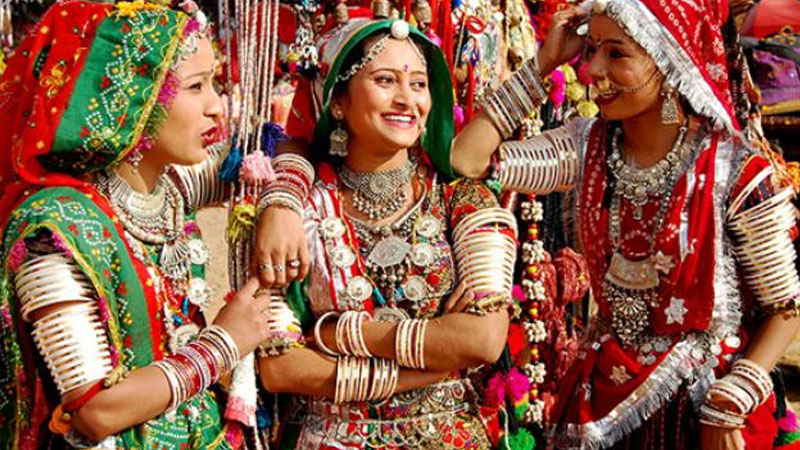
The women wear sarees with the ‘odhni’ covering their head as a sign of respect. The men wear dhotis and kurtas with a headgear called paggri or safah.
The designs on their clothing are either embroidered or dotted. The material of the clothing is usually cotton and even silk for women.
Language
Rajasthan depends majorly on income earned via tourism. Thus most of the people have learned English or Hindi or perhaps both to be able to communicate the travellers. However, there are some dialects originating from Rajasthan that include Marwari, Malvi, Mevati, Jaipuri / Dhundari of which the most famous is Marwari.

